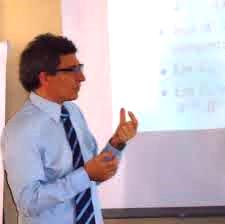|
Dugundji'sTheorem
Marcelo Coniglio
Centre for Logic, Epistemology and the History of Science and
Institute of Philosophy and Human Sciences
State University of Campinas, Campinas, SP, Brazil
Newton Peron
Federal University of South Frontier (UFFS),
Chapecó, SC, Brazil
J. Dugundji's Theorem for Modal Logic is perhaps less popular than his
famous result in Topology, but even so highly important. In 1940,
Dugundji proves (see Dugundji, 1940) that no modal system between S1
and S5 can be characterized by a single finite logic matrix. Rarely
cited in manuals of logic, it was Dugundji's result that boosted the
development of new semantics for modal logic, such as R. Carnap's for
S5 and S. Kripke's for S2, S3 and S4.
The method used to arrive at such negative result is not original. As
pointed out by Dugundji himself, his result was inspired by a
previous proof by K. Gödel (Gödel, 1932) on a similar theorem
concerning intuitionistic propositional logic IPC: Gödel proved that
a wide family of logics encompassing IPC could not be characterized
by finite logical matrices.
Starting with Gödel, passing through Dugundji's Theorem until arriving
to paraconsistent logics, it will be shown that the results in
(Arruda,1975) and (Carnielli, Coniglio e Marcos, 2007) support the
thesis that, indeed, a comparatively small number of logic systems can
be characterized by finite matrices (although there is an infinite
number of many-valued logics). The first part of the present tutorial
intends to trace a continuous line between the seven decades
distancing these results.
Behind that line there exists, on the one hand, the attempt to
generalize the semantics of finite matrices. By means of the notion of
Nmatrices, it is possible to (non-deterministically) associate to each
formula of a given language a set of possible truth-values, instead of
a (deterministic) single truth-value. As proved in (Avron, 2005),
Dugundji-like theorems even for Nmatrices persist for some systems of
paraconsistent logics. In more precise terms: there is a vast family
of paraconsistent systems such that no one of them can be semantically
characterized by a single finite Nmatrix.
On the other hand, there have been attempts to generalize Dugundji's
result in order to encompass the enormous amount of modal systems that
have arisen since the publication of his theorem. Among them, it
should be mentioned the results obtained by (Scroggs, 1951), (Esakia
and Meskhi, 1970), (Chagrov and Zakharyaschiev, 1997) and (Coniglio
and Peron, 2014).
The last part of this tutorial will be devoted to analyzing such
generalizations of Dugundji's Theorem.
|
|

Bibliography
(Avron, 2005) Non-deterministic semantics for paraconsistent C-systems. In L. Godo, editor, Proceedings of the VIII European Conference on Symbolic and Quantitative Approaches to Reasoning with Uncertainty (ECSQARU 2005), pages 625-637.
(Arruda, 1975) Remarques sur les systèmes Cn. In Comptes Rendus de l' Academie de Sciences de Paris, volume 280 of A-B, pages 1253-56.
(Carnielli, Coniglio and Marcos, 2007) Logics of Formal Inconsistency. In D. Gabbay and F. Guenthner, editors, Handbook of Philosophical Logic (2nd. edition), volume 14, pages 15-107.
(Coniglio and Peron, 2014) Dugundji's Theorem Revisited . Logica Universalis, 8(3-4):407-422, 2014.
(Chagrov and Zakharyaschiev, 1997) Modal Logic, Oxford University Press.
(Dugundji, 1940) Note on a property of matrices for Lewis and Langford's calculi of propositions. The Journal of Symbolic Logic,
5(4):150-151.
(Esakia and Meskhi, 1970) Five critical modal systems. Theoria, 43(1):52-60, 1977.
(Gödel, 1932) On the intuitionistic propositional calculus. Anzeiger Akademie der Wissenschaften Wien, mathematisch-naturwiss. Klasse,
32:65-66.
(Scroggs, 1951) Extensions of the Lewis system S5. The Journal of Symbolic Logic, 16(2):112-120.
|
